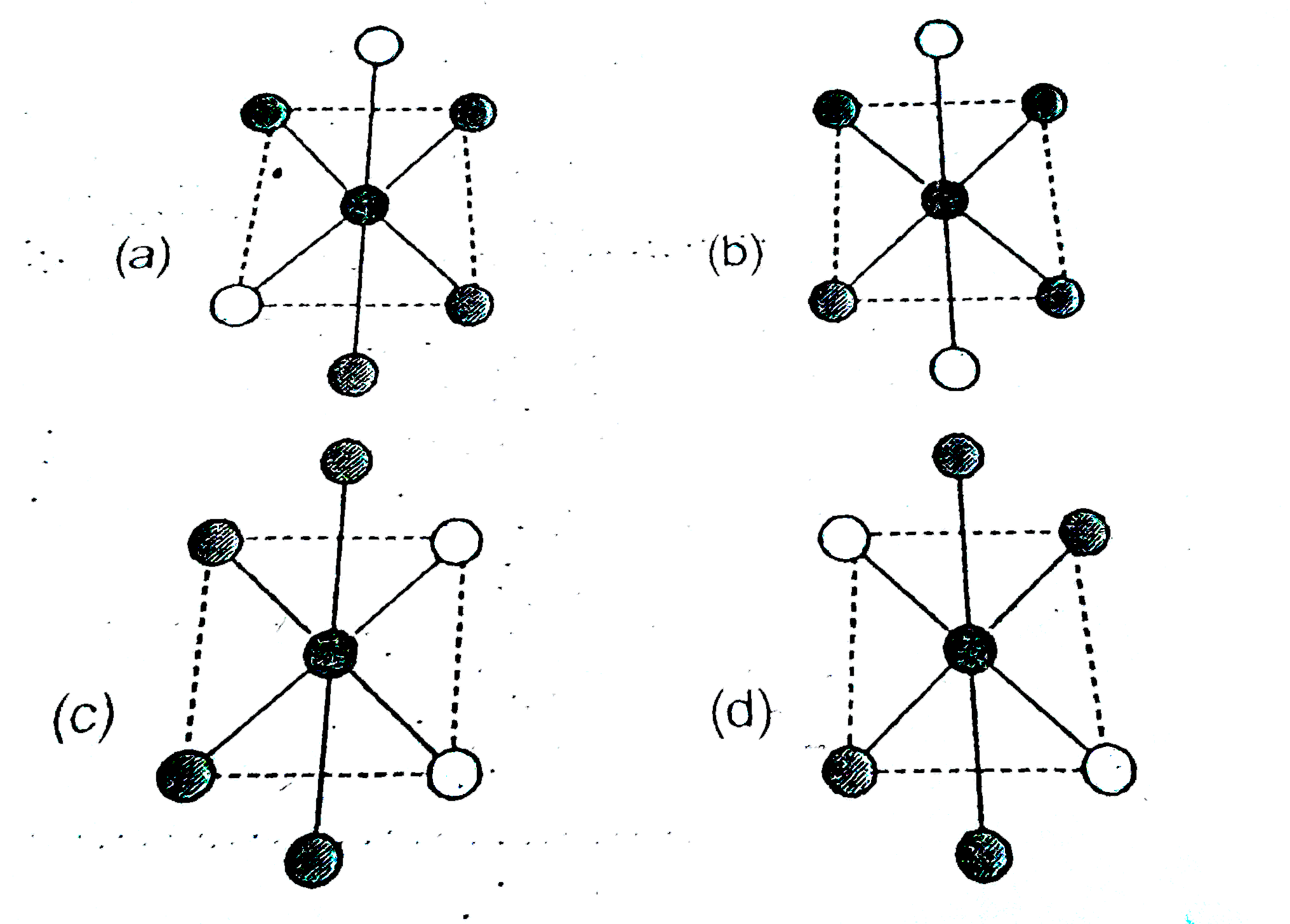The dissolution of NH4CI in water is endothermic even though NH4CI dissolves in water spontaneously. Which one of the following best explains this behaviour?
The bonds in solid NH4CI are weak
The entropy-driving force causes dissolution.
Endothermic processes are energetically favourable
The dissolving process is unrelated to enegry.
To explain why the dissolution of NH₄Cl in water is endothermic yet occurs spontaneously, we can break down the reasoning into several steps:
1. Understanding the Dissolution Process:
- When NH₄Cl (ammonium chloride) is added to water, it dissociates into its constituent ions: NH₄⁺ (ammonium ion) and Cl⁻ (chloride ion).
- The reaction can be represented as:
\(
NH₄Cl (s) \rightarrow NH₄^+ (aq) + Cl^- (aq)
\)
2. Endothermic Nature of the Process:
- The dissolution of NH₄Cl is classified as endothermic because it absorbs heat from the surroundings. This means that the enthalpy change (ΔH) for the dissolution process is positive.
3. Spontaneity of the Process:
- Despite being endothermic, the dissolution occurs spontaneously. This can be explained using the concept of Gibbs Free Energy (ΔG), which determines the spontaneity of a process.
- The relationship is given by the equation:
\(
ΔG = ΔH - TΔS
\)
- For a process to be spontaneous, ΔG must be negative.
4. Entropy Change (ΔS):
- When NH₄Cl dissolves, there is an increase in disorder (entropy) because solid NH₄Cl is converted into ions in solution.
- The entropy change (ΔS) for this process is positive, indicating an increase in randomness.
5. Balancing Enthalpy and Entropy:
- Although the dissolution is endothermic (ΔH > 0), the positive entropy change (ΔS > 0) can contribute significantly to making ΔG negative at higher temperatures.
- Therefore, the increase in entropy is the driving force that compensates for the positive enthalpy change, allowing the dissolution to occur spontaneously.
6. Conclusion:
- The best explanation for the spontaneous dissolution of NH₄Cl in water, despite it being endothermic, is that it is driven by entropy. The increase in disorder (entropy) outweighs the energy absorbed (enthalpy), resulting in a negative Gibbs Free Energy.
Final Answer:
The dissolution of NH₄Cl in water is spontaneous due to entropy-driven forces, even though the process is endothermic.
---
- When NH₄Cl (ammonium chloride) is added to water, it dissociates into its constituent ions: NH₄⁺ (ammonium ion) and Cl⁻ (chloride ion).
- The reaction can be represented as:
\(
NH₄Cl (s) \rightarrow NH₄^+ (aq) + Cl^- (aq)
\)
- The dissolution of NH₄Cl is classified as endothermic because it absorbs heat from the surroundings. This means that the enthalpy change (ΔH) for the dissolution process is positive.
- Despite being endothermic, the dissolution occurs spontaneously. This can be explained using the concept of Gibbs Free Energy (ΔG), which determines the spontaneity of a process.
- The relationship is given by the equation:
\(
ΔG = ΔH - TΔS
\)
- For a process to be spontaneous, ΔG must be negative.
- When NH₄Cl dissolves, there is an increase in disorder (entropy) because solid NH₄Cl is converted into ions in solution.
- The entropy change (ΔS) for this process is positive, indicating an increase in randomness.
- Although the dissolution is endothermic (ΔH > 0), the positive entropy change (ΔS > 0) can contribute significantly to making ΔG negative at higher temperatures.
- Therefore, the increase in entropy is the driving force that compensates for the positive enthalpy change, allowing the dissolution to occur spontaneously.
- The best explanation for the spontaneous dissolution of NH₄Cl in water, despite it being endothermic, is that it is driven by entropy. The increase in disorder (entropy) outweighs the energy absorbed (enthalpy), resulting in a negative Gibbs Free Energy.
The dissolution of NH₄Cl in water is spontaneous due to entropy-driven forces, even though the process is endothermic.
Topper's Solved these Questions
- THERMODYNAMICSBOOK - CENGAGE CHEMISTRY ENGLISHCHAPTER - THERMODYNAMICSEXERCISE - Exercises (Assertion-Reasoning)
23 Videos
- THERMODYNAMICSBOOK - CENGAGE CHEMISTRY ENGLISHCHAPTER - THERMODYNAMICSEXERCISE - Exercises (Interger)
10 Videos
- THERMODYNAMICSBOOK - CENGAGE CHEMISTRY ENGLISHCHAPTER - THERMODYNAMICSEXERCISE - Multiple correct Answer Type
2 Videos
- STOICHIOMETRYBOOK - CENGAGE CHEMISTRY ENGLISHCHAPTER - STOICHIOMETRYEXERCISE - Archives Subjective
33 Videos
Similar Questions
Knowledge Check
Which one of the following is a diastereomer of (R)-4-bromo-cis-2-hexene ?
A(S)-4-bromo-cis-2-hexeneB(S)-5-bromo-trans-2-hexeneC(R)-4-bromo-trans-2-hexeneD(R)-5-bromo-trans-2-hexeneAssertion :- A solution of NH4Cl in water is acidic in nature.
Reacon : - Ammonium ions undergo hydroysis to from NH4OH .AIf both assertion and reason are true and reason is the correct explanation of assertion.BIf both assertion and reason are true but reason is not the correct explanation of assertion.CIf assertion is true but reason is false.DIf both assertion and reason are false.
When NH4Cl is not used together with NH4OH in group-III reagent which of the following cation will not be precipitated?
View SolutionA solution containing NH4CI and NH4OH has [ΘOH]=10−6molL−1, which of the following hydroxides would be precipitated when this solution in added in equal volume to a solution containing 0.1M of metal ions?
View SolutionIf NH4OH in presence of NH4Cl is added to a solution containing Al2(SO4)2andMgSO4, which of the following will precipitate?
View SolutionThe dissolution of ammonia gas in water does not obey Henry's law. On dissolving. a major portion of ammonia molecules unite with H2,O to form NH4,OH molecules. A portion of the latter again dissociates into NH+4, and OH− ions. In solution thercfore, we have NH3, molecules, NH4,OH molecules and NH+4, ions and the following equilibrium exist:
NH3(g) (pressure P and concentration c) →NH3(l)+H2,O→NH4,OH→NH+4→,+OH−
Let c1,mol/L of NH3, pass in liquid state which on dissolution in water forms c2 mol/ L of NH4,OH. The solution contains c3mol/L of NH+4, ions.
If P is the partial pressure of ammonia at equilibrium, then which of the following is constant?
View SolutionAmmonia gas dissolves in water to form NH4OH. In this reaction water acts as
View SolutionConsider the following isomers of [Co(NH3)4Br2]+ . The black sphere represent Co, grey spheres represent NH3 and unshaded spheres represent Br.

Which of the following are cis-isomers ?
View Solution
